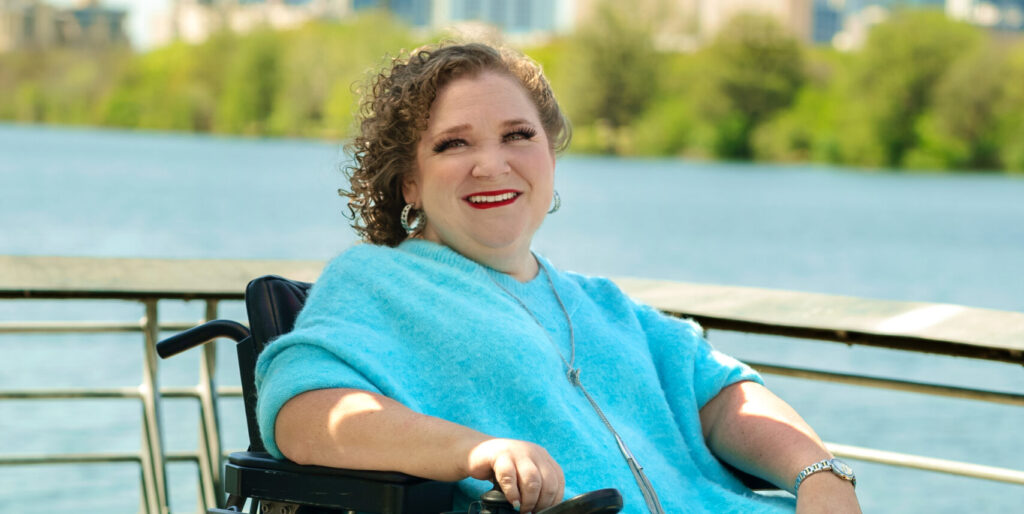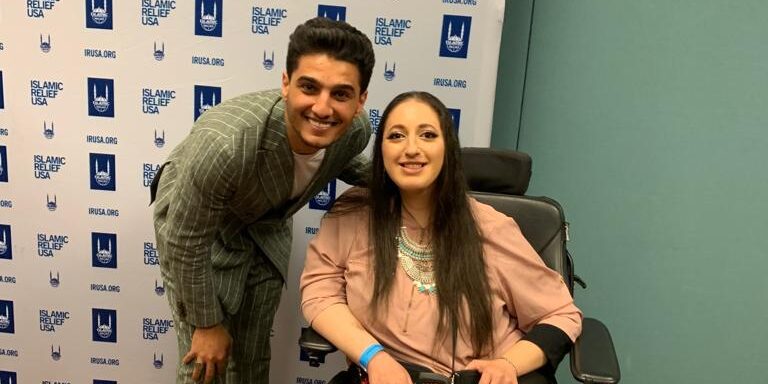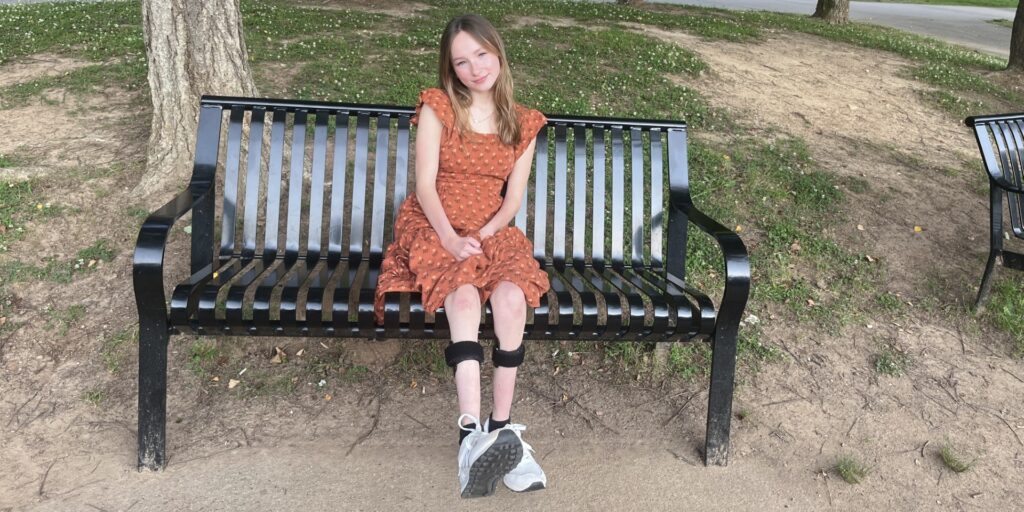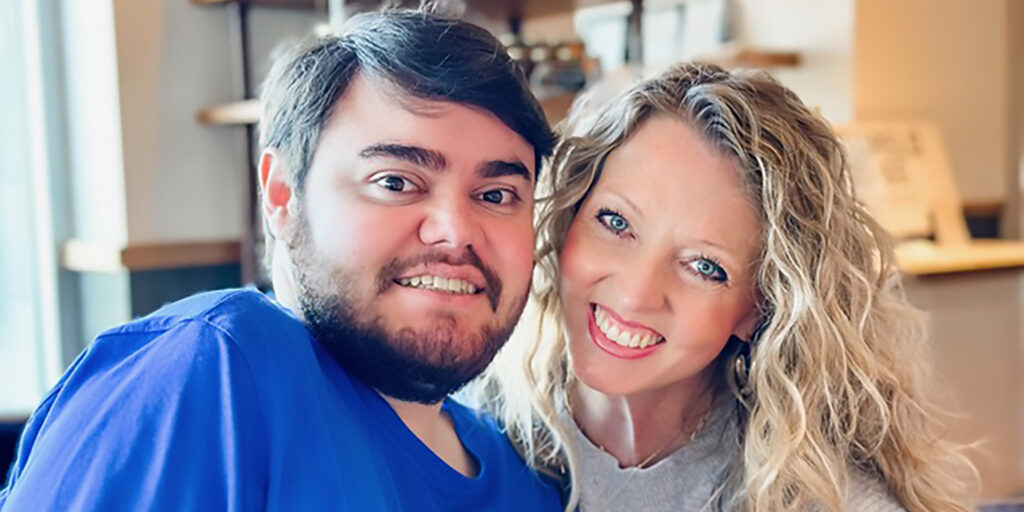
Book Launch Day – The Truth About Things That Suck
By Mindy Henderson | Monday, June 6, 2022
5 Second Summary
Quest for Success explores the different paths that individuals with neuromuscular disease have taken to reach their potential and pursue dreams. This series spotlights individuals from our community and shares their journey to independence and accomplishment.
The Muscular Dystrophy Association, and the neuromuscular disease community has been a part of my extended family my entire life. And so today, on one of the biggest days of my life, it felt right to celebrate with all of you.
I started writing when I was about eight years old. Mostly fiction, I loved making up characters and describing scenes and finding ways to surprise a reader. In school, I loved any assignment or project that had a writing element. English was always my favorite class. In high school, I signed up to write pieces for our yearbook.
As an adult, my love of writing has continued, though my interests shifted from writing fiction, to goal-setting and personal development, and I have dreamed of becoming a published author.
Today, that dream comes true.
After 12 years of actively working toward securing a publishing contract and birthing a book into the world, I bring you…The Truth About Things That Suck: And How to Make Them Suck Less.
As part of the community of individuals living with a disability, I think I can safely say that we all have significant opportunity on a daily basis to learn to navigate challenges well. Whether related to my disability or not, I have tried to live my life focusing on the solutions to my problems rather than the problems themselves. This book is an outpouring of the struggles I have faced in my life, some of the struggles of people I have known, and what we have all learned along the way. It is about our mindset as we go through hard times.
As I wrote, I compartmentalized the different kinds of challenges I have faced… Disability and illness, rejection, loneliness, shame, the struggle to become a mother, job loss, discrimination, and the list goes on. My hope is that anyone who picks up this book can find themselves somewhere in it and can find a renewed sense of hope, encouragement, and empowerment.
I am incredibly proud and humbled to get to serve you every day as the Editor-in-Chief of Quest, and on this day, one of the biggest days of my life, I’d like to share an excerpt of the book with you. I hope you enjoy it!
An Excerpt from The Truth About Things That Suck

I used to think that because I was in a wheelchair, my quota of bad luck or challenges and struggles had been met. I thought I couldn’t get cancer, lose a job, break a bone, have an accident, or have my heart broken. I actually remember thinking those thoughts—no kidding. I was four-ish, I think, was in my bedroom, and I remember hearing someone else was sick. And I thought to myself, “I could never get (whatever the thing was)—I’m in a wheelchair. Nothing else bad can happen.” Ah, the innocence of youth, right? While it was a precious theory, it turned out to be one of the few times in my life when I was wrong (for real—ask my husband. I’m, like, never wrong.). Turns out, there actually were (and still could be…oy…) plenty of things that could go wrong, hurt me, devastate me, or could traumatize me and show up on any old Tuesday merely to be a pain in the #&@!.
My disability is what I would label as my “primary” adversity—my #1 challenge, struggle, and pain-in-the-#&@! Tuesday. I was diagnosed with a neuromuscular condition called Spinal Muscular Atrophy (SMA) when I was only about 15 months old. This is a condition that (in my incredibly simple, unscientific brain’s way of explaining) affects my motor neurons’ ability to function and to send messages to the muscles telling them what to do. Because of the lack of communication to the muscles, they atrophy over time. Just about every muscle in my body is affected. It’s a progressive condition, which means, the sucker gets worse over time.
As it gets worse, I’ve had to grieve the loss of the function I used to have—to be able to reach up to do my own hair, my makeup, to lift a glass up off a table, and drink from it without a straw. The list goes on. I have had corrective surgery for severe scoliosis from my weakened back and trunk muscles, but I still sit a little crooked. There is the potential for pulmonary and respiratory complications, and as a result, my lung capacity is diminished, so things like flu or COVID could be quite serious for me.
There is a bit of a silver lining to my condition—there are varying degrees of severity and no one case is quite like another. For you brainiacs in the crowd, it boils down to the number of copies of the SMN2 gene you have. I have three copies of it, and the more copies you have, the better off you are. Before you ask, yes, I’ve definitely thanked my parents for all the SMN2. It has served me well, and I’ve always been on the healthier end of the SMA spectrum.
When I was born, all was well—I was a normal, healthy, happy baby girl. I hit all of the major milestones babies hit—rolling, crawling, standing, walking, and talking. But then, I stopped walking and standing (continued talking like a maniac—in fact, I don’t mean to brag, but my first word was a sentence. My dad came in to get me up from a nap and I looked up and said, “Hi daddy.” I know, genius, right…?).
As for walking, I’m told it was almost as if I’d lost interest and couldn’t be bothered to stand or walk anymore, and there were a few other signs indicating something might be wrong, so my mom took me to the pediatrician, who said I was fine and that it was likely a phase I was going through, and to let it play out.
My parents knew better. Parents know when something is wrong with their children, and their instincts were kicking in. My dad was working in a hospital and was able to get someone else to see us, and that was the first stop on the scavenger hunt it took to get my diagnosis.
Ultimately, I was diagnosed by the head of neurology at the Mayo Clinic in Minnesota. This was 1975 (ugh, okay, I’m taking one for the team and giving you the tools to calculate my age!) and there was far less known about my condition back then. As a result, my parents (who by the way, were only in their twenties when this happened and they found themselves with a sick child, having to navigate a complicated medical system to get answers) were told some really scary things—I would lose my cognitive function. I would not live to be three. While there was no cure and no treatments to speak of, the diagnosing doctor DID agree with my parents who speculated that maybe physical therapy could help. So, they tried. They wanted to know that if I were to leave this world earlier than they’d expected, that they had done everything humanly possible to help me.
I started to get stronger—it was slow, and subtle, but the improvements were irrefutable. And then I had a third birthday, and a fourth. And many more after that. AND, I am sitting here writing these words—cognition fully intact. (Although, most mornings that little miracle requires a lot of coffee…) The sentence of life in a wheelchair was real, however, no probation, no parole, no early-release for good behavior (and I’ve tried SO hard to be good, y’all!). So, life in a wheelchair, it shall be.
Here is the thing, though. This story is not one I remember living, of course—it’s one of those stories that you just always know your entire life. I don’t remember who told it to me first, but I’ve always had the knowledge of how this all went down. And because of that, my parents became my first examples of having hope in the face of what the absolute experts in their fields were telling them was a hopeless situation. Consequently, hope was one of the first critical concepts to navigating adversity I learned in life.
My parents stood up to the monster in my muscles. They said they would “try anyway,” and then, they did. There was no guarantee that their efforts would pay off. But they had to believe it could. See, that’s the thing about hope. Hope is merely a belief that something is possible.
Sometimes there are ZERO indications that anything else could be, but it’s about believing anyway. The future is a mystery. Not many of us are able to look ahead and see the future. So, if you can’t see it, and can’t confirm what is to be, why not believe in the best possible scenario? The worst thing that will happen is that you’ll be disappointed IF the outcome isn’t what you’d hoped for. And IF the outcome is a bad one, THEN, absolutely, grieve and feel the pain or the sadness, or whatever is appropriate. But please, don’t presuppose pain and suffering. Even if ALL indications, ALL history, ALL the experts, or ALL the facts point to something bad occurring, if you can BELIEVE something else COULD be possible, you hold the power.
I have seen life change on a dime—for good and for bad. I believe that by having hope and by being unwavering in it, it can set off a chain-reaction of other events that actually DO produce a better outcome. If you have hope, you are thinking positively. That hope can seep into your deci- sions, your actions, your behavior, your words, your openness to options. All THOSE things, then, can affect the way others perceive you and your circumstances. It can change the way others interact with you and, can potentially, cause them to act in your favor.
I’m not talking about being delusional here, folks. Deal in facts, 100%, yes. But what I am saying is that in life, there are twists and turns, unseen forces. There are things people don’t know. Outside factors and influences and inside factors and influences, in addition to any number of things that could potentially impact how something will play out. And yes, sometimes all the hoping in the world won’t change what is to come, but dangit. Why not live in that hope and see what happens? Guaranteed, it’ll be a more pleasant journey on the way to the destination, at a minimum. Don’t let a foregone conclusion rob you of hoping for—and by extension, maybe getting—something better…
…As we move ahead to the next chapter and beyond, I am going to share things that are hard. They are things that, in my life, caused me pain (physical AND emotional), and caused me to cry more tears than I can count. I’ll share things that made me feel shame. Things that terrified and frustrated and angered me. And best of all, I’ll share things that made me laugh like a maniac out of the sheer ridiculousness of them. You might ask yourself, why the heck would she do this? Honestly, from the bottom of my heart and soul, I do it for you.
I do it because I see a need in our world. COVID shook us in ways we never imagined. The racial climate in our world is in chaos. People have been destroyed professionally, financially, medically, relationships have suffered, and lives have been lost.
It is not an indictment on our society, but from where I sit (pun- intended!) I think people right now need help seeing the “bright side.” I think some even need permission to know that seeing the bright side is okay. I think we need a different perspective—we need encouragement to shift from limiting beliefs to growth mindsets, hope, and I think people need to be seen.
In the pages of this book, I will tell you how I have struggled. But I am also telling you as loudly as I know how, “I see YOUR struggle too. It matters. I care. There is a way through. And you have permission to be happy, despite your circumstances. And I’d like to help.”
Reprinted with permission. Please visit woodhallpress.com/truth for more information.
TAGS: Community, Quest for Success, Staying Active, Year of Independence
TYPE: Blog Post
Disclaimer: No content on this site should ever be used as a substitute for direct medical advice from your doctor or other qualified clinician.




